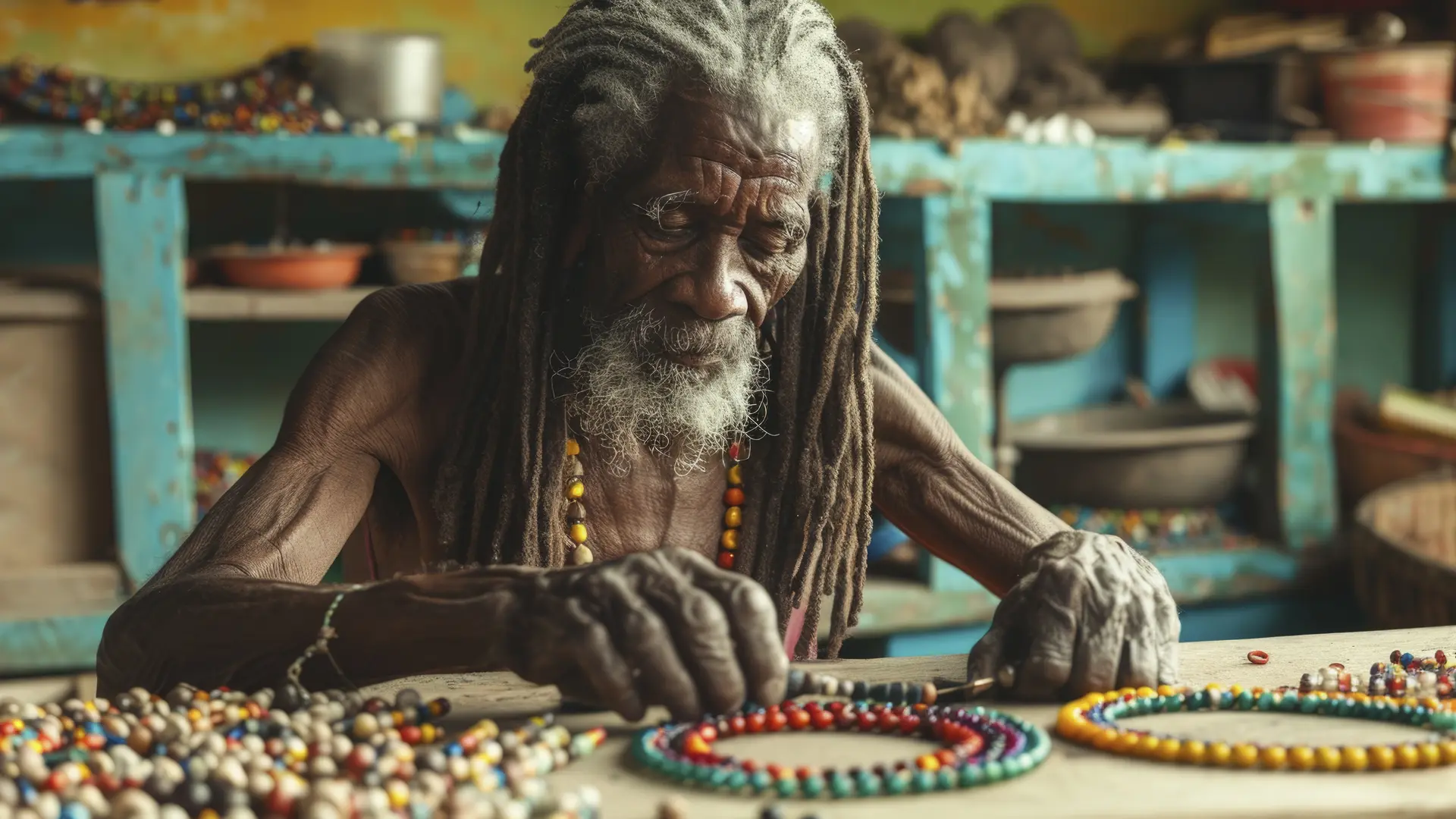
If you've ever seen a photo of a Maasai woman or warrior, one thing stands out right away — the beautiful, colourful beadwork they wear. Necklaces stacked high, earrings, bracelets, and headpieces — all handmade, bright, and full of tradition. But these are not just decorations. Every bead, every colour, every design tells a story.
In this blog, we’ll take you through the beautiful world of Maasai beadwork — what it is, what the colours mean, how it’s made, and why it’s such a big part of Maasai culture.
Who Are the Maasai?
The Maasai are a semi-nomadic ethnic group found mainly in Kenya and northern Tanzania. They are known for their tall appearance, colourful clothes, jumping dances, and strong traditions.
While this blog is part of our Uganda series, understanding neighbouring cultures like the Maasai helps us appreciate the rich diversity of East Africa. The Maasai have kept many of their traditions alive over centuries — including their art of beadwork.
What Is Maasai Beadwork?
Maasai beadwork refers to the colourful jewellery made mostly by Maasai women. They create necklaces, earrings, belts, and other items by sewing tiny glass beads onto wire or leather. These pieces are worn daily and also during special ceremonies like weddings, dances, or rites of passage.
The designs may look random to outsiders, but they actually hold deep meanings — from a person’s age and marital status to their social rank or family history. It’s not just fashion — it’s identity.
The Meaning Behind the Colours
When you look at a Maasai necklace, you're not just seeing decoration — you're seeing a full story, told through colour.
Designs That Speak
Young Maasai girls learn to bead from their mothers and grandmothers. It’s a skill passed through generations, filled with pride and patience.
Beadwork and Life Events
These pieces are lovingly handmade and may take days or even weeks to complete.
Beadwork Today: Art Meets Income
Maasai beadwork is now also a source of income. Many women sell their jewellery to tourists or online. When you buy authentic beadwork, you're supporting local women, preserving culture, and helping families.
Many organisations train women in design and business skills to expand their reach while honouring tradition.
Tip: Always buy from fair-trade or directly from Maasai artisans.
How to Respect the Culture
Remember: these are not just accessories — they are a living symbol of identity and strength.
Why This Matters to Uganda Blog Readers
Though Maasai culture is rooted in Kenya and Tanzania, it connects with Uganda through shared regional traditions. Beadwork is also used by many Ugandan tribes during ceremonies and cultural events.
Learning about the Maasai enriches our understanding of East African culture as a whole — and inspires respect for its variety and depth.
Final Thoughts
Maasai beadwork is not just beautiful — it’s meaningful. It carries stories of identity, love, strength, and tradition. It reminds us that handmade things, created with purpose, can speak louder than words.
Next time you see a piece of Maasai jewellery, look closer. Ask what it means. Think of the hands that made it. Honour the people behind each bead.
In a world of fast fashion, Maasai beadwork stands out — as something slow, real, and rich with meaning.